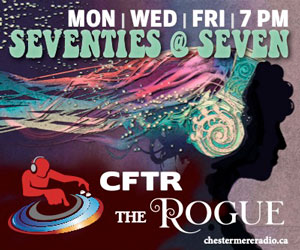Faithful readers may have noticed that Canada is undergoing a rapid fancy-fication of the available booze.
Yes, gentle reader, gone are the days of the same old rotgut swill from the megabreweries and giant industrial spirits producers. Today, a seemingly limitless number of craft brewers and artisanal distillers have been cropping up, much to the delight of your intrepid liquor reporter.
The Mexican spirit called Mezcal is no exception, with several new and exciting brands appearing on the market over the past few years.
For those not familiar with this particular tipple, Mezcal is a distilled spirit made from the Maguey plant, which primarily grows in the Mexican state of Oaxaca (pronounced wah-ka-ka for you gringos).
The Maguey plant has a long and storied past in Mexico, and was used to create a fermented beverage called Pulque for thousands of years. However, when the Spanish conquistadors brought distillation technology to the New World in the 1500’s, the fermented sap of the Maguey plant was quickly discovered as a good candidate for distillation, thusly giving birth to the spirit we now know as Mezcal.
Similar to the standards used for the related spirit Tequila, there are four classifications of Mezcal.
White Mezcal is crystal-clear and is not aged. This results in a fiercely harsh taste, similar to hillbilly moonshine. It is definitely an acquired taste only for a very few, and most people would do well to avoid this one.
Dorado is also unaged, but has a coloring agent added to impart a golden hue that makes it look like it has been aged in oak barrels. Again, this is a cheap spirit best avoided.
Reposado has been aged in wooden barrels for up to 9 months, which helps smooth out the harsh flavours, and generally make the drink more palatable. This is the grade that you will most often find in your local store, or at the disco bars in a Mexican all-inclusive resort. If you order a Mezcal cocktail, this will generally be the grade used
Añejo is the highest grade of Mezcal, and has been aged in wooden barrels for at least 1 year, but more commonly 3 to 4 years. The barrel aging takes off the harsh edge, and helps impart smoke and vanilla flavours to the spirit. Since this is the most expensive grade of Mezcal, hiding the flavour in a mixed drink would be a tragic loss. Treat this fine Mezcal right by sipping it slowly, like a fine brandy or whisky.
The production of Mezcal starts with the harvesting of the Maguey plant, which can grow a single flower stalk up to 25 feet high. The leaves and roots are chopped off, then the heart of the plant is cooked for up to three days. The plant is then crushed and mashed to extract the juices, which are fermented, and then distilled to increase the alcohol percentage.
Various fruits, herbs, and other flavouring agents are added during the fermentation and distillation processes, resulting in a nearly limitless assortment of unique variations between distillers.
If you have ever seen a liquor bottle with a worm in the bottom, you were looking at a bottle of Mezcal. To be more specific, it is actually the larva of the Hypota agavis moth, which often lives in the Maguey plant. Some distillers claim that the worm is used to add flavour or show that the Mezcal is authentic, but your humble narrator thinks it is just a marketing gimmick.
A common misconception is that Mezcal contains a hallucinogen called mescaline, likely due to the similarities in the names.
For those who didn’t spend their formative years in the sixties, mescaline is a naturally occurring substance in the Peyote Cactus, with psychedelic effects similar to LSD. However, since Mezcal comes from the Maguey plant, it contains absolutely no hallucinogenic compounds, so if you see purple unicorns after too much Mezcal, don’t blame it on a bad trip.
Of course, the Peyote cactus and Maguey plant grow side by side in the Mexican desert, so if you were into that sort of thing, you could certainly find both of them at the same time.
So, with the end of summer upon us, remind yourself of sunnier climes by picking up a bottle of Mezcal for the final garden party of the season!








Love the article and am thrilled that mescal is showing up regularly in Canada. A few quick clarifications for you:
1. White, or unaged mezcal, is called a joven. Like a silver in tequila. No aging. And joven mezcals can be strong, yes, but not all. And some are truly amazing and they are not the weak link in the mezcal chain at all. In fact, most people in mezcal favor jovens. The good ones are not harsh at all and are beautiful and complex in fact. Not many brands have aged product, unlike tequila. Most cocktails are made with the jovens.
2. Reposados do smooth it out and are aged 2 to 12 months (less than a year). There are some amazing repos out there, like Ilegal or Espiritu for example.
3. Anejos are indeed the most expensive but not always the best. As I said, many favor a great joven no matter what. There are a few anejos out like Sacacuento or Ilegal that are simply UNBELIEVABLE. So good. But also around $100. You would not make a cocktail with those. Anejos must be aged at least a year but rarely much more.
4. You are spot on with respect to the worm. An old marketing gimmick that is thankfully dying. No good mezcal has a worm.
5. Finally, have not heard the term Dorado. Maybe you meant abocado? Which is a mezcal with additives of some sort, like a worm, or certain flavorings. Not common either way.
Hope this helps!